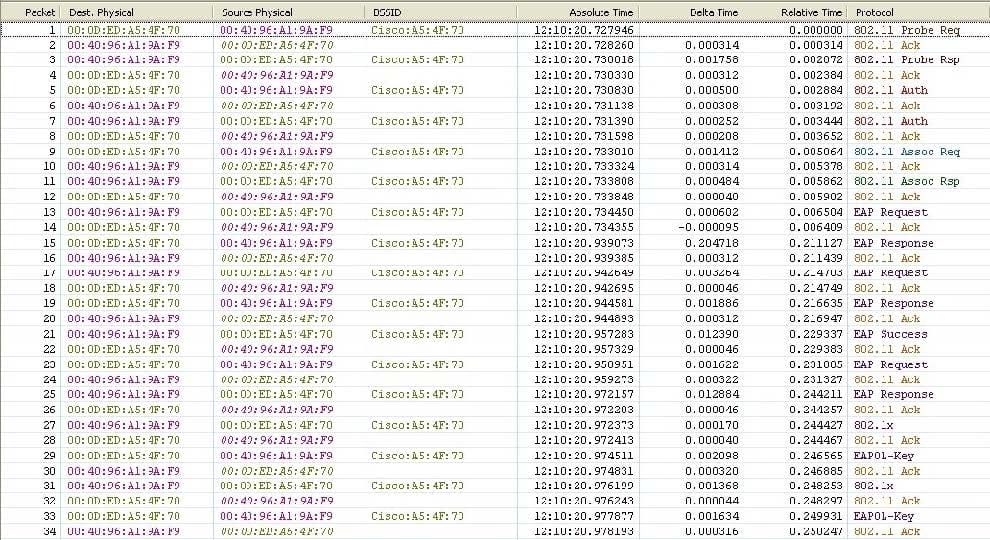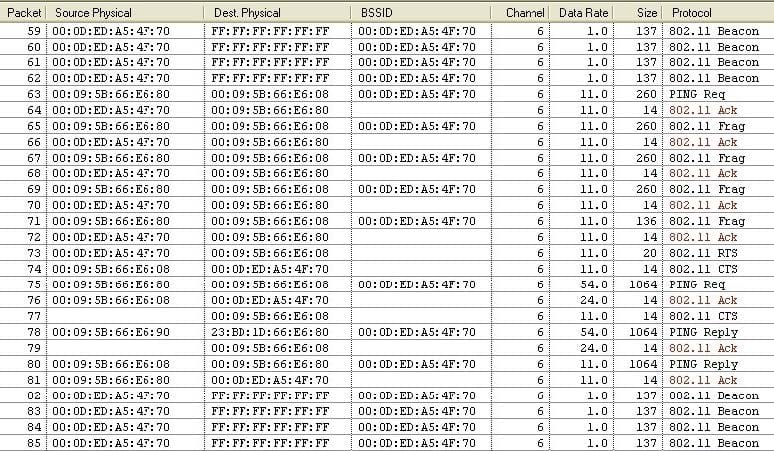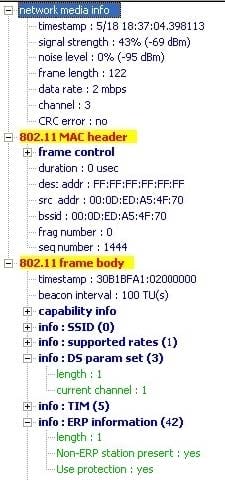Exam Details
Exam Code
:PW0-270Exam Name
:Certified Wireless Analysis ProfessionalCertification
:CWAP CertificationsVendor
:CWAPTotal Questions
:60 Q&AsLast Updated
:Jul 05, 2025
CWAP CWAP Certifications PW0-270 Questions & Answers
-
Question 1:
As a WLAN consultant, you have been asked to troubleshoot a problem with a single wireless client station (Station-Z). Your customer informs you that other wireless client stations are not having problems with wireless connectivity, and that Station-Z is configured in the same manner as all other wireless client stations on the network. Station-Z is showing an unusually high retransmission count in its client utility statistics. Using a wireless protocol analyzer, where and how should you begin troubleshooting this problem? (Choose 2)
A. Position the analyzer halfway between Station-Z and the access point. Measure the distance between Station-Z and the access point.
B. Position the analyzer near Station-Z. Analyze Station-Z's transmissions and acknowledgements. Look for RF and obstacle-induced interference.
C. Position the analyzer near the access point. See if Station-Z's frames are reaching the access point and if so, analyze their signal strength.
D. Position the analyzer near Station-Z. Analyze the frames Station-Z is receiving, looking for delayed ACK frames.
E. Position the analyzer halfway between Station-Z and the access point. Analyze the data rate at which frames are sent and how long they take to be received.
-
Question 2:
Why is a high CRC error rate in L2 protocol analysis software NOT always a valid indicator of network performance? (Choose 3)
A. If protocol analysis software is not properly configured with frame decryption parameters, it can't accurately calculate a CRC, which includes the encrypted frame body contents.
B. If the protocol analysis radio hardware is not located in the same area as intended client devices or APs, its data sampling may not be representative of actual traffic on the network.
C. Radio and antenna hardware used for protocol analysis may not match the receive sensitivity, diversity, MIMO, or antenna gain capabilities of the network WLAN hardware.
D. Layer 2 protocol analysis can only collect and interpret data that is received properly at the MAC layer, and cannot quantify some PHY-layer problems.
-
Question 3:
Given the screenshot shown, Choose the statement that accurately describes what is being seen by this protocol analyzer.

A. Three access points are on the same channel in the same physical area.
B. A Single Channel Architecture (SCA) WLAN solution has three WLAN profiles configured
C. One access point is using the 802.11 round robin Beacon feature.
D. Three wireless stations are participating in an Ad Hoc WLAN.
-
Question 4:
Shown is a screenshot of a wireless protocol analyzer displaying the decode information for a single 802.11 encrypted data + CF-Poll frame. The infrastructure BSS on which this information was captured is using WEP and this particular frame was sent from a client station (STA) to an access point (AP).

As a protocol analyst, how would you explain the existence of this frame on the wireless medium given the information in the decode?
A. The IEEE 802.11 network is using both version 1 and version 2 protocols simultaneously. This unexpected frame is from the version 2 protocol set.
B. The frame was sent by a client station that does not comply with IEEE HR/DSSS standard to an access point that is Wi-Fi certified.
C. The access point is operating as a repeater, and clients must poll repeater access points in order to transmit data frames through them.
D. The frame was misinterpreted because of insufficient information received by the analyzer due to frame corruption.
-
Question 5:
Given: Shown are frames captured from an IEEE 802.1X/LEAP authentication. This WLAN is a Robust Security Network (RSN) using the CCMP cipher suite.

Using the information given in the screenshot, calculate how long it takes for only the frames that are part of the 4-Way handshake to complete.
A. 3.018 ms
B. 5.820 ms
C. 210.443 ms
D. 237.753 ms
E. 243.743 ms
-
Question 6:
ABC Company's WLAN administrator is getting complaints from one user that his WLAN throughput is sluggish compared to other users in his area. The administrator takes his diagnostics laptop, which has a wireless protocol analyzer installed, to the area where the complaining user works. The administrator uses the PING utility to test connectivity from the complaining user's wireless client station to another wireless client station across the closest access point, while capturing the wireless frames. The administrator sees what is displayed in this screenshot.

From this screenshot, which statements can you conclude to be TRUE that are related to the complaining user's throughput problem? (Choose 2)
A. The complaining user's WLAN client utilities are configured with a small fragmentation threshold.
B. The complaining user's station is retransmitting fragments many times likely due to nearby RF interference.
C. The access point and other stations are using ERP-OFDM modulation, and the complaining user's wireless client station is using HR/DSSS modulation.
D. The complaining user's wireless client station should be using RTS/CTS as a protection mechanism, but it is not.
E. The access point is not signaling for protection (Protection = no) in the Beacons, but it should be.
-
Question 7:
Given: There are many differences between analyzing wireless and wired networks. In a wireless network, there is no guarantee that one station can hear another station's transmissions. If no corrective actions are taken nor corrective mechanisms implemented when a "hidden node" problem exists, which measurable statistics parameter will likely increase in a wireless protocol analyzer?
A. Duration value
B. Retransmission Count
C. Contention Window
D. Authentication Failure
E. BlockAck Reset
F. ACK Timeout
-
Question 8:
When 802.11 standard compliant AES-CCMP security is being used with IPSec/ESP for layered security, what will a WLAN protocol analyzer see as the security mechanism in use when a user browses to an HTTPS secured web page?
A. AES-CCMP
B. IPSec/ESP
C. SSLv3
D. AES-CCMP and IPSec/ESP
E. AES-CCMP, IPSec/ESP, AND SSLv3
-
Question 9:
Given the IEEE 802.11 Beacon frame decode shown,

determine which statement is definitively true.
A. The access point is operating on channel 3.
B. The access point has both 1 Mbps and 2 Mbps configured as basic rates.
C. This Beacon frame came from an ERP or HT access point.
D. The SSID value in this Beacon is null.
E. ERP mobile stations must use the RTS/CTS protocol before Data transmissions.
-
Question 10:
What MAC layer information will a dual-band 802.11n protocol analyzer capture if it is capturing data frames encrypted with WPA2-Enterprise? (Choose 2)
A. Source IP Address
B. Null Data frames
C. TCP SYN datagram
D. Short Interframe Spaces
E. Sequence Control fields
F. Legacy Signal field
Related Exams:
Tips on How to Prepare for the Exams
Nowadays, the certification exams become more and more important and required by more and more enterprises when applying for a job. But how to prepare for the exam effectively? How to prepare for the exam in a short time with less efforts? How to get a ideal result and how to find the most reliable resources? Here on Vcedump.com, you will find all the answers. Vcedump.com provide not only CWAP exam questions, answers and explanations but also complete assistance on your exam preparation and certification application. If you are confused on your PW0-270 exam preparations and CWAP certification application, do not hesitate to visit our Vcedump.com to find your solutions here.